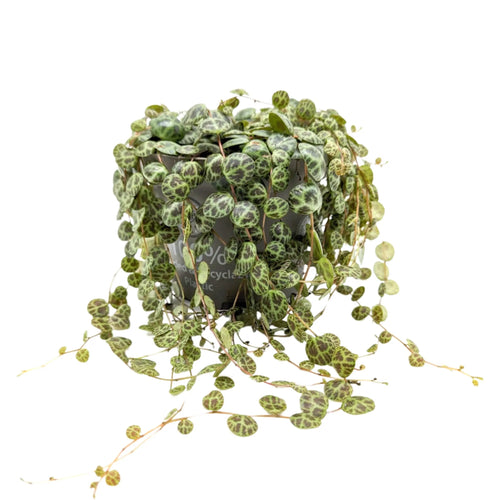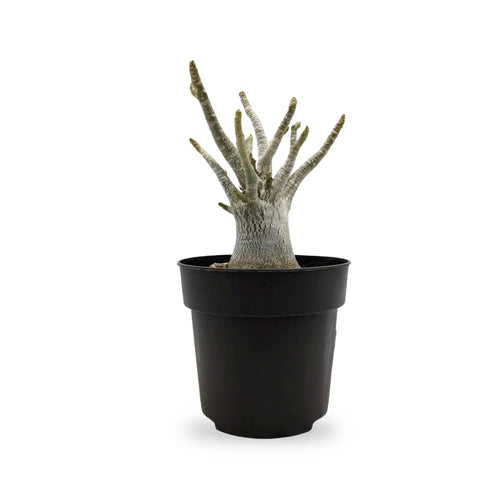Bringing plants and pots together is more than decoration—it’s a thoughtful design choice that can elevate any outdoor or indoor space. The right combination of size, shape, colour, and texture between the plant and its container results in a polished, harmonious look. Whether you're styling a patio, balcony, or garden, this guide will help you craft beautiful plant + pot pairings for a refined and cohesive aesthetic.

Size and Shape Synergy
The most balanced compositions begin with size and shape. A pot should feel proportionate to its plant—too small, and the roots will crowd; too large, and the plant might appear lost.
For large, leafy varieties like philodendrons, choose wide or deep pots that can handle their volume. Smaller plants like succulents or herbs benefit from compact containers that complement their dainty stature.
Also consider vertical balance. Avoid pairing tall plants with short, squat pots, as this can make the arrangement look top-heavy. A narrow, tall plant looks best in a similarly shaped container, keeping the visual weight grounded and stable.
Colour Harmony and Contrast
Colour plays a powerful role in pairing plants with their pots. Harmonious tones between foliage and pot create a subtle, cohesive appearance. For instance, deep green pots complement rich foliage like ferns, while muted earthy tones highlight the dusty blue of eucalyptus or the silvery leaves of lavender.
On the other hand, high-contrast combinations offer striking visual impact. A white ceramic pot can make the deep green of a jade plant pop, while a black container intensifies the brightness of a yellow marigold. These bold combinations are perfect for adding a splash of personality.
Try using the colour wheel—pair complementary colours like purple foliage with a yellow pot, or blue tones with terracotta. The contrast is pleasing and energizing to the eye.
Texture and Material Matters
Texture adds depth and dimension to your plant-and-pot combinations. A rough, rustic terracotta pot pairs beautifully with smooth, glossy foliage, while a sleek ceramic planter enhances the wild structure of trailing vines.
Materials also communicate style. Terracotta offers a natural, earthy feel suited for traditional or Mediterranean-themed gardens. Glazed ceramic pots feel modern and polished. Concrete brings a minimalist edge, while metal or woven planters introduce rustic or vintage charm.
Don’t be afraid to mix materials. Pairing a matte plant with a shiny pot—or vice versa—adds layers and tactile interest to your space.

Thoughtful Arrangement and Placement
A well-composed layout is just as important as the pots themselves. Give each pot enough space to breathe—overcrowding can make even the best pairings look cluttered. Instead, space pots in tiers or clusters of varying heights and sizes for depth and flow.
Use risers, plant stands, or wall-mounted shelves to introduce vertical levels. Hanging pots with trailing plants can make use of unused overhead space, drawing the eye upward and adding a lush canopy effect.
Try creating visual triangles with groupings—place one tall plant at the back, a mid-height one in the middle, and a short, full one at the front to keep the arrangement dynamic.
Inspiring Pairing Ideas
Here are a few curated ideas to spark inspiration:
Tall palm + terracotta cylinder – Perfect for corners or entryways; combines tropical flair with rustic charm.
Sunflower + bright ceramic bowl – Bold colour matched with bold blooms creates instant cheer.
Succulent cluster + shallow concrete tray – Modern and low-maintenance, great for desks or patios.
Herbs + woven basket-style pot – Rustic and aromatic, a perfect addition to outdoor kitchen areas.
Climbing vine + hanging clay pot – Ideal for balconies or wall gardens, adds movement and softness.

Tips for Styling Like a Pro
Match the vibe: Align pot style with your garden or interior aesthetic. Clean lines and neutral colours suit modern spaces; aged finishes and detailed textures work best in cottage or vintage themes.
Use repetition: Repeating a pot shape or colour across your setup can create a sense of rhythm and cohesion, even with varied plant types.
Add finishing touches: Decorative stones, mulch, or even tiny figurines can be used to enhance the base of the plant and tie the look together.
Consider the backdrop: Neutral walls make bold pots stand out. Against brick or stone, earthy-toned pots blend beautifully.
Personalising Your Space
Plants and pots are more than decor—they’re an expression of your personality. Feel free to customise your arrangements to suit your mood, season, or even a specific corner of your home. A bright pot during summer can uplift a patio, while textured neutral planters might add warmth indoors during winter.
Seasonal swaps, like rotating flowering plants or changing pot colours, can keep your space feeling fresh and engaging throughout the year.

Conclusion
Pairing the right plant with the right pot is a blend of art and science. It’s about understanding proportions, choosing complementary (or contrasting) colours, playing with textures, and arranging them with intention. By focusing on these elements, you’ll create a space that feels balanced, vibrant, and uniquely yours.
With thoughtful combinations and a little creativity, any plant and pot can become a design statement. Let your green companions shine in style.










